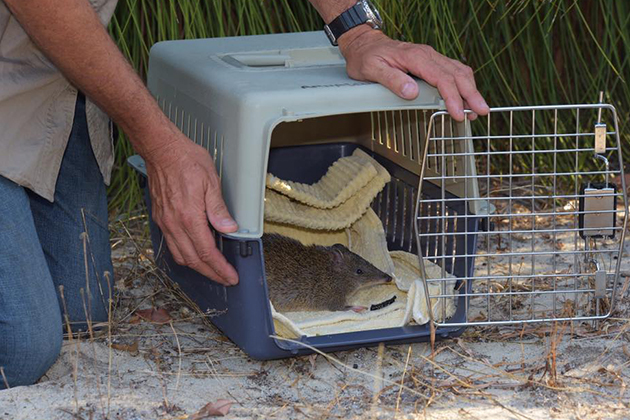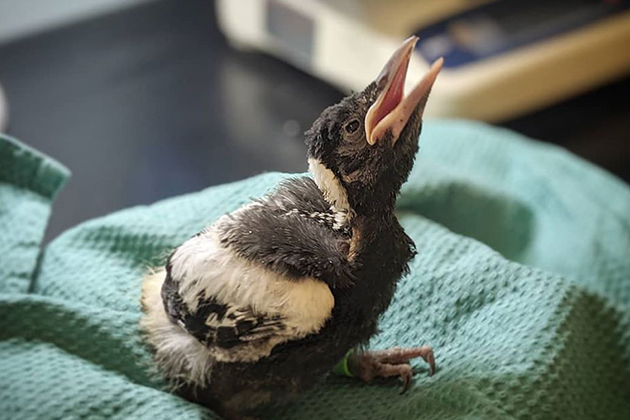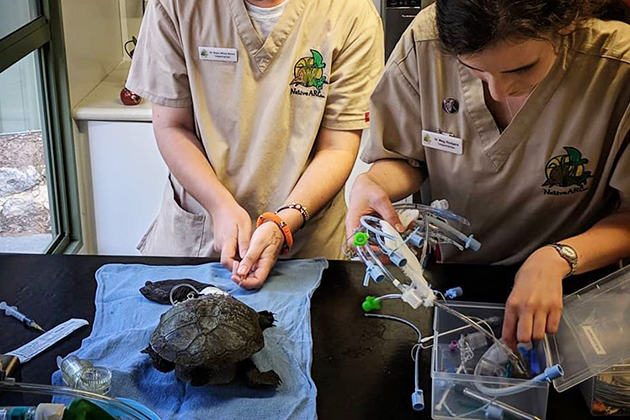16 March, 2020 By: Tatum Stafford
If you've taken a road trip in WA, chances are you've passed an injured animal somewhere along the way.
While it might be your immediate instinct to pull over and jump out of the car to help, there are some steps you need to take to ensure your own safety and the safety of the animal.
Native Animal Rescue Centre (ARC) is a volunteer-run rehabilitation centre in Bibra Lake that admits more than 4,000 injured, sick and orphaned animals each year.
Native ARC manager Dean Huxley says many of the animals they see have been injured by vehicles or found by the roadside - so he knows a thing or two about what to do if you find yourself in this situation.
Bear in mind that this advice is general information only. If you're unsure, it's best to get specific information by calling Native ARC on 9417 7105.
1. Firstly, know what animals you must not approach
Before carrying out the rescue of a sick or injured animal, the most important thing to consider is your safety. Bats, snakes, large reptiles and birds of prey should not be approached under any circumstance, as all of these animals have the potential to cause serious injury or even fatality. Bats may also be carriers of a potentially fatal zoonotic disease known as Australian Bat Lyssa Virus. Only wildlife experts should handle any of these animals.
Due to their size, adult kangaroos, adult wallabies and emus can also be potentially dangerous and shouldn’t be approached.
If you see any of these animals on the side of the road, contact the Wildcare Helpline as soon as possible. You’ll need to provide details of the location to the Helpline staff, so it pays to have your GPS switched on if you’re carrying a mobile phone.

2. Pull over safely
If you believe the animal is safe to approach, pull over to the side of the road, but only if it's safe to do so. Ensure your car is a good distance from the road’s edge so you’re not impacting oncoming traffic.
RELATED:
Driving tips to avoid an animal collision »
3. Approach with caution
“Remember that an injured animal is going to be frightened, stressed, and in pain. Wildlife are not aware that you are trying to help, and they may attempt to defend themselves if they feel threatened,” Dean advises.
It's therefore important to ensure you approach the animal slowly, observe its body language, and try not to make any sudden movements.
4. Comfort and cover the animal
Whether you are prepared to transport the animal to a treatment facility or simply stay with it while waiting for wildlife specialists to arrive, it’s important to make the animal feel as comfortable and safe as possible. If you have a towel, jacket or old blanket handy in your car, place it over them. Completely cover the animal and ensure it is not able to work its head or legs loose to avoid a nasty scratch or bite.
For small birds, you can gently throw the item over them and then pick them up, but for larger birds, placing the towel over their head and wings will minimise stress and their chances to escape. The same approach can be used for lizards, but thick gloves are advised.
Small mammals can be caught by placing a towel over their entire body and picking them up gently.

5. Contain the animal
If you have any cardboard boxes or plastic tubs with ventilation in your car, use them to contain the animal. No matter whether you’re transporting the animal yourself or waiting for help to arrive, it’s best to contain them safely to avoid potential hazards to yourself or to drivers in oncoming traffic.
If you don’t have a box or tub, don’t attempt to transport the animal, as having unrestrained wildlife in the car can be dangerous.
“An injured animal can regain energy and become a serious hazard when driving if it is not safely contained,” Dean says.
In this instance, it’s best to call wildlife services, give them your location and stay with the animal in a safe spot away from the flow of traffic while you wait for them to arrive.
6. Transport the animal
If you can transport the animal, find out where the nearest vet or registered wildlife rehabilitation centre is and take them there. Many injured or sick animals will require specialist care, so the sooner you can get the animal to an expert, the greater chance of survival. It’s also important to not give the animal food or water unless instructed to do so by an experienced rehabilitator.
Larger animals such as water birds or small mammals need to be transported with specialised equipment, so you’ll need to contact Native ARC for Perth metro areas, or the Wildcare Helpline for further assistance. If you’re waiting for a rescue group to attend, it’s best to observe the animal from a safe distance in case of any sudden movements.
- Keep their surroundings calm. Injured wildlife can be very stressed by the trauma they have suffered, so it’s important to keep their surroundings calm. In Dean’s experience, “Increased stress can further compromise an animal’s health, so once the animal is contained, leave it be. Do not handle it any more than necessary. Turn down the radio, keep talking to a minimum, and keep children and domestic animals away.”
- Keep them warm. As the animal may be experiencing a state of shock, it’s important to keep them warm by keeping them in blankets or using the car heater.
RELATED: Tips for long distance driving»

What to do if you find a deceased animal
If you find a deceased animal on or near the road, it’s important to contact the Wildcare Helpline as soon as possible.
If it is safe to do so, it’s encouraged to move the animal away from oncoming traffic. If left in an open area, the body can be food for other animals; so moving the carcass will prevent other animals from becoming potential traffic hazards.
If the animal is a marsupial, check to see if it has a pouch. If it does and you find a joey, contact Native ARC as soon as possible.
Need to contact an animal rehabilitation centre for further advice?
You can contact Native ARC 24 hours a day on 9417 7105, and for larger animals call the Wildcare Helpline on 9474 9055.
Image credit: Native ARC
